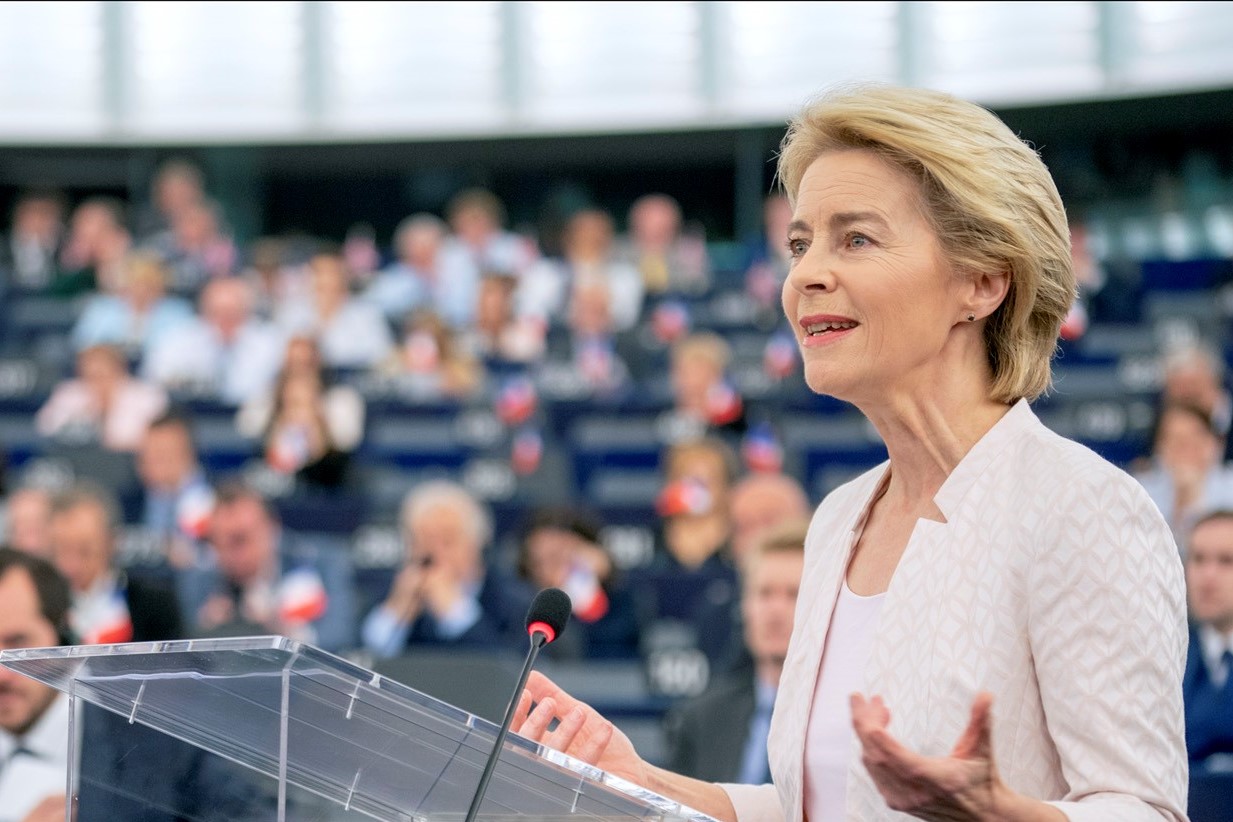
European Green Deal
Enter the European Green Deal
The blueprint of the “European Green Deal” was pitched on 11 December, barely two weeks after the European Commission’s investiture.
While its precise details, concrete actions, commitments and milestones remain to be ironed out, the broad thrust is relatively simple: by 2050, Europe is to become the first climate-neutral continent.
On the way to climate neutrality, the EU would reduce by 2030 their greenhouse gases by 50 to 55 percent below the 1990 level (so far, a loss of only 40 percent was planned).
Without a doubt, the Green Deal will be the largest and most significant but most controversial project of Ursula von der Leyen’s five-year term. This Communication, which reads more like a statement of intent, is to be implemented by Executive Vice-President Frans Timmermans (see our “The Implementers” overview here).
In the loosest sense, it is meant to decarbonize the economy but also create jobs and improve people’s quality of life. To this end, the communication outlines several pieces of legislation and programs, including a new industrial strategy, import hurdles for climate damaging goods and a clean transport strategy. It also includes a declaration on work towards new emission limits for cars and shipping and the faster expansion of green energy. The Commission also would like for technical solutions for climate protection to be developed in Europe. All in all, Von der Leyen would like to mobilize 100bn euros in investment for the “most vulnerable sectors and regions”.
Europe on the move, but when?
Ambition and wishful thinking, all condensed in a bittersweet smile. For the transport sector, the Green Deal sets out a bold and electorally pleasing approach. It pertains to set out a no-holds-barred path towards a green revolution, but couples this with overtures to the industry.
The proposals for the road sector illustrate this well, adding a layer of pessimistic realism. Notwithstanding the sizeable threat of an almost instantaneous revision of the CO2 standards for light vehicles, the Communication stops short of tangible regulatory proposals.
Unsurprisingly, the Communication denotes a new Commission nature, now astute in understanding the priorities that young Europeans. Better manage freight transport: check. Benefit from automated and multimodal mobility: check. Stronger Alternative Fuel Infrastructure network: check. Even the inclusion of road and maritime transport in the European emission trading system: check.
Nonetheless, the concrete actions are not easily found. It appears that the Commission has conceded defeat when looking at transport: while flirting with bold actions, the Commission appears to recognize its inability to green transport by itself. The hint to withdraw two proposals initially heralded as instrumental (the Combined Transport and Eurovignette directives) follows this logic. Hence the focus – yet again – on financing investments for the abovementioned Alternative Fuel Infrastructure instead of clear mandates for national deployment plans.
towards a decarbonized energy system
The Green Deal seeks to decarbonize the energy sector by boosting the use of renewables (especially offshore wind turbines), phasing out coal and decarbonizing gas. In order to continue securing an affordable energy supply, the Commission is aiming for an integrated, interconnected and digitalized energy market that respects technological neutrality.
The role of smart infrastructure will be key to enable the transition, which is why the regulatory framework for energy infrastructure, including the TEN-E regulation, will be reviewed. This will allow the development of smart grids, energy storage, hydrogen networks and carbon capture & storage. In line with that, the Commission will propose an evaluation and review of the Trans-European Network-Energy Regulation as well as a revision of the Energy Taxation Directive by June 2021.
In terms of energy storage, the Commission will continue supporting the European Battery Alliance and implementing the Strategic Action Plan on Batteries. More specifically, legislation to ensure a safe, sustainable and circular battery value chain will be proposed by October 2020.
a five-year plan for industry
The next five years will be the window of opportunity to make industry ready for a climate-neutral economy in 2050. To this end, the Green Deal will deliver an EU industrial strategy as well as a new circular economy action plan in March 2020. The latter will focus on sectors which are resource-intensive such as construction and electronics. Specifically, it would include a ‘sustainable products’ initiative and strengthen extended producer responsibility to stimulate circularity. Meanwhile, action on waste will aim at reducing and reusing, while simplifying waste management for citizens.
The Commission marks the building and construction sectors as both crucial and in need of decarbonization. A 2020 push for renovation, the review of the Construction Products Regulation and even the potential inclusion of building-emissions in the ETS is intended to help these sectors step up to the challenge.
The agenda for industry and construction is both ambitious and broad, with a clear way forward. However, the risk associated with its ambitious timeline is that the Green Deal will run out of steam once it runs into obstacles.
global climate leadership
President von der Leyen’s ambition to have a geopolitical Commission also shapes the European Green Deal: the EU ought to be a global climate leader, not just by example, but as well through its actions. It will start giving greater weight to environmental considerations in its trade policy and use its weight to influence standards for sustainable growth globally. It wants to mobilize private sector actors to gather funds for helping others to achieve the transition.
However, the Commission’s main tool will become ‘green deal diplomacy’. This means defending the Paris Agreement as the multilateral anchor of global climate policy while engaging bilaterally with partner countries, especially in Africa, to convince them to do more and aid them in reaching goals.
next steps – a catalogue of good intentions?
The content of the Green Deal is only one part of the whole picture. Just as interesting are the politics, which seem to have tapped into a great demand for climate ambition. The date chosen for its announcement is intended as a signal to the EU Summit on Thursday and the ongoing UN climate summit Madrid.
The political jockeying around the European Green Deal will only intensify in the next weeks and months. What fate awaits the EGD depends on many things; among them, convincing the European Parliament and the Member States.
While the European Parliament, on the one hand, has a higher environmental representation since May 2019 election as is traditionally more ambitious than the Member States in ecological matters, the Member States will be more difficult to sway. It will certainly be an exciting EU summit on Thursday with Poland, Hungary and the Czech Republic calling for more concrete commitments for billions in aid before they accept the goal of climate neutrality in 2050, while at the same time, the EU MFF has not been agreed upon.
For Von der Leyen, it is a first test. While there will likely be many hiccups on the way, and the fate of the European Green Deal is all but certain. the new Commission President appears determined to reach a solution.
